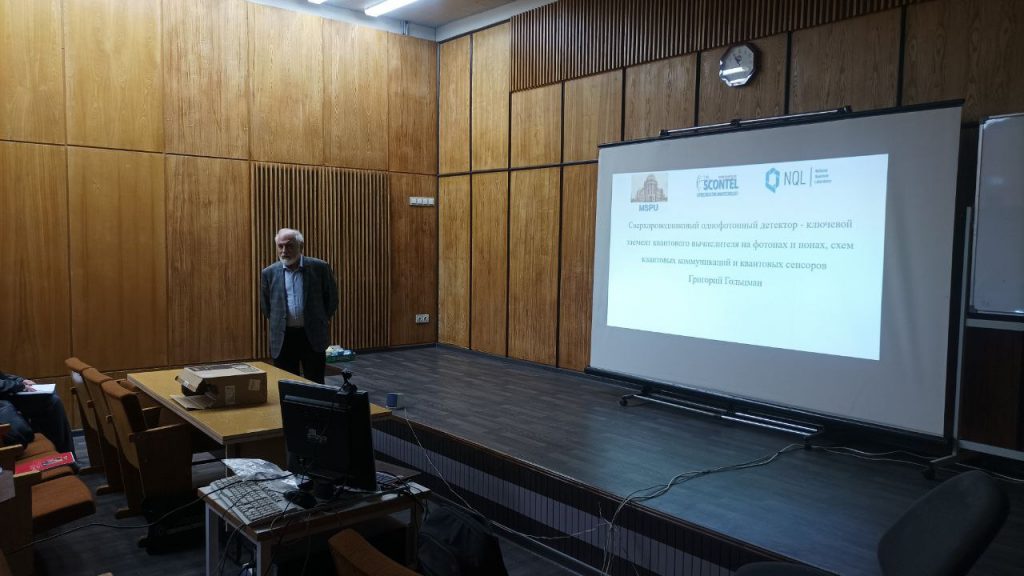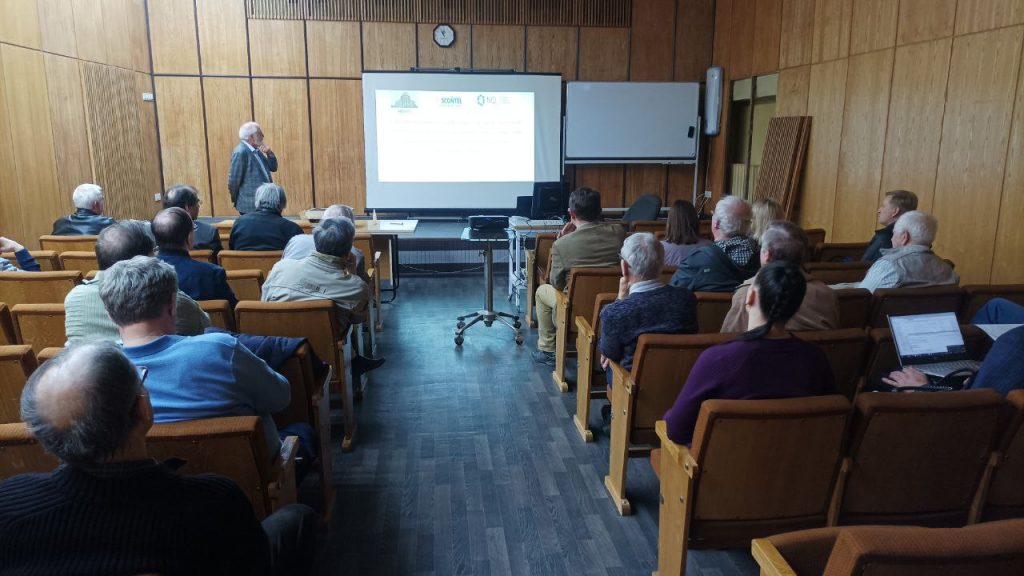Speaker: Professor Grigory Naumovich Goltsman (Moscow Pedagogical State University; Higher School of Economics; Moscow)
Topic of the report: “A superconducting single-photon detector is a key element of a quantum computer based on photons and ions, quantum communication circuits and quantum sensors”
Abstract: Fundamental studies of the 1990s of the local nonequilibrium state in a current-carrying superconducting nanowire led us 20 years ago to a breakthrough photon counting technology – the superconducting single-photon detector SSPD. In 2004, we founded the company “Superconducting Nanotechnologies” (Skontel LLC), a spin–off of MPSU, which successfully commercializes multichannel single-photon receiving systems based on SSPD. Due to the highest quantum efficiency in the IR range, fast photon counting, no noise and low jitter, SSPD quickly became in demand on the global quantum technology market, for the development of quantum computers based on photons, quantum communication networks and a variety of quantum sensors. The next technological breakthrough was the installation of a superconducting single-photon SSPD detector on an optical waveguide. This opened the way to the creation of quantum photonic integrated circuits. Currently, many physical systems for the realization of qubits are being studied, including superconducting circuits, trapped ions and atoms, quantum dots, color centers in a solid, and photons. Superconducting single-photon detectors are a necessary component base for two of them: for a quantum computer on photons and on ions. Due to a number of advantages, such as scalability, small footprint, low weight, no need for optical alignment, as well as low power consumption and compatibility with CMOS, quantum photonic integrated circuits (QPIC) successfully solve this problem. In this case, the NbN nanowire is placed on top of a nanophotonic waveguide made of Si3N4, which increases the effective interaction length. Thanks to this, it is possible to achieve almost complete absorption of photons and reduce the coverage area of the detector. This reduces the dead time of the device and increases the efficiency of the detector. Our approach is fully scalable and, along with a large number of devices integrated into one chip, can be adapted, for example, to the mid-IR range, where photon counting technology is not yet available. In almost all quantum communication networks demonstrated in different countries, SSPD detectors are used for long distances and high transmission speeds of the quantum key. They are also in demand in many quantum sensors. The presentation discusses the most interesting examples.

